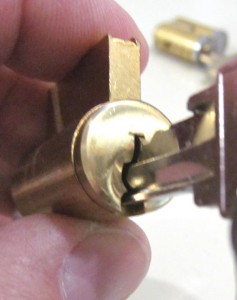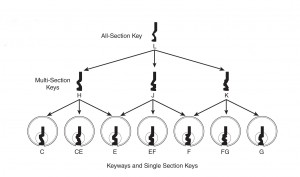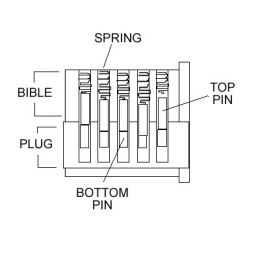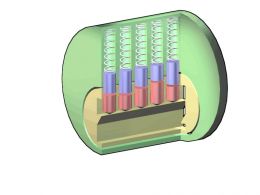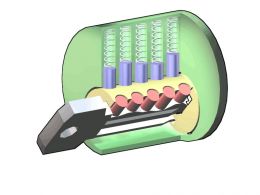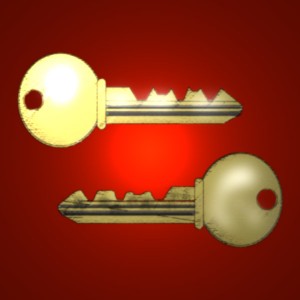 I never cease to be amazed when someone tells me their car won’t start and then they say,
I never cease to be amazed when someone tells me their car won’t start and then they say,
“Well, it started yesterday.”
What sense does that make? I ask you. Is today yesterday? I think not.
Yes, indeed, time wears out almost everything: clothes, human bodies, tree limbs, stones, car batteries … and locks and keys as well.
Keys and locks are for the most part both made out of brass. Most pin tumblers are brass and most keys are either made of brass or ‘nickel silver,’ whatever that is. Brass is a self-lubricating metal, producing verdigris as it oxidizes. Nevertheless, as brass slides across brass again and again, particle by particle the substance of key, pin tumbler and lock cylinder are gradually worn away.
This manifests in several ways. I’ve made a list of the most easily observable below:
- The keyway gets larger, and the fit that was once pleasingly tight is now loose and sloppy
- The key gets smaller, aggravating the sloppiness
- The peaks are worn off the blade of the key, but his only affects the appearance of the key. It is the valleys that are important.
- The blade loses height because the bottom of the blade is worn
- The plug gets smaller, allowing the upper and lower pin chambers to be at unintended angles
- The bottoms of the pin tumblers, once rather pointed, become rounded, thereby shortening the overall length of the pin
- Grooves are worn into the plug by the top pins
Eventually the old key that works relatively well in the old lock sits at an odd slant, its tip raised and its bow drooping because of the sloppy keyway and worn bottom of the key blade. When one turns the key it twists in the keyway because the key is thinner than it once was, allowing all the pins to drop a little in their chambers. But since the key and lock have been used together for so long, this one key may continue to operate the lock for a long time.
However, if one cuts a new key using the old as a template, the new key will likely not work well because it will not sit or twist the same way in the keyway. If one attempts to decode the old key, one usually finds it to be a difficult task because keys tend to wear unevenly. But even if a key cut true to the original manufacturer’s specifications is produced it will quite likely not work well in the worn lock, because it will not put the pins in the positions the metal of the lock has become accustomed to.
This tends to confound the user because the differences between the old key and the new are measured in thousandths of an inch and are not easily discernible to the untrained eye. Locksmiths are then asked the question,
“Why doesn’t the key you cut for me work? The original does.”
And when the locksmith suggests it might be time to buy a new lock, s/he may hear,
“But this lock has worked fine for thirty years! And my key works great!”
Next, of course, they are likely to call you a bad locksmith, but there is no help for it if they won’t listen to the truth that their beloved lock, their venerable old daily friend, has outlived its ability to do its job, sad, but true.
The locksmith may enjoy some (albeit perverse) solace in the fact that eventually the key will stop working in the lock altogether, or will become so thin and frail that it breaks off in the lock, and at that point the user will realize that something has indeed gone amiss. If it happens in the middle of the night, and the locksmith is on call, s/he may get substantially more than vindication out of the deal.
Hint: Vindication is not all it’s cracked up to be.
